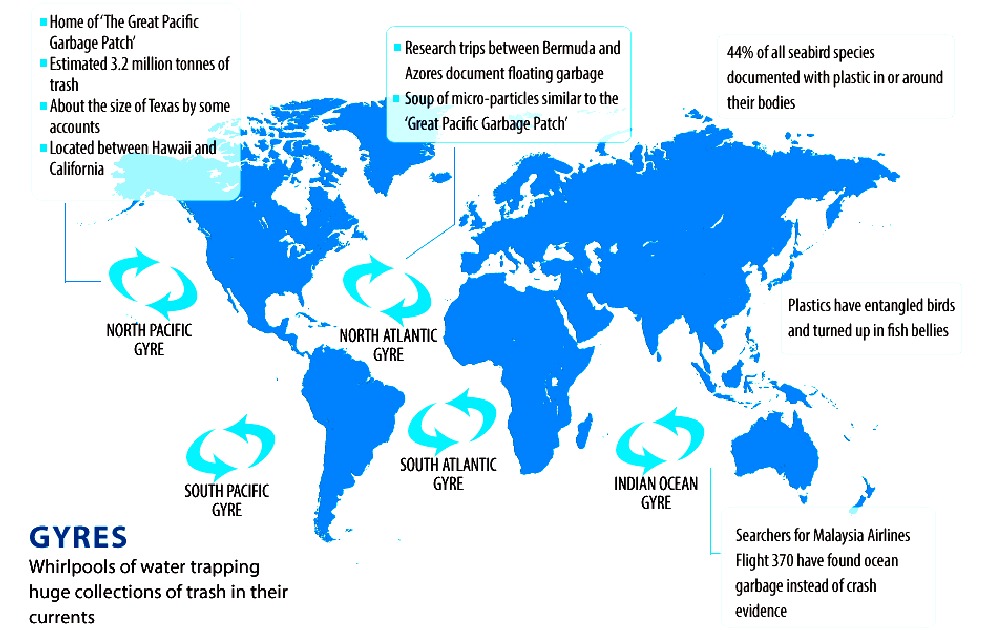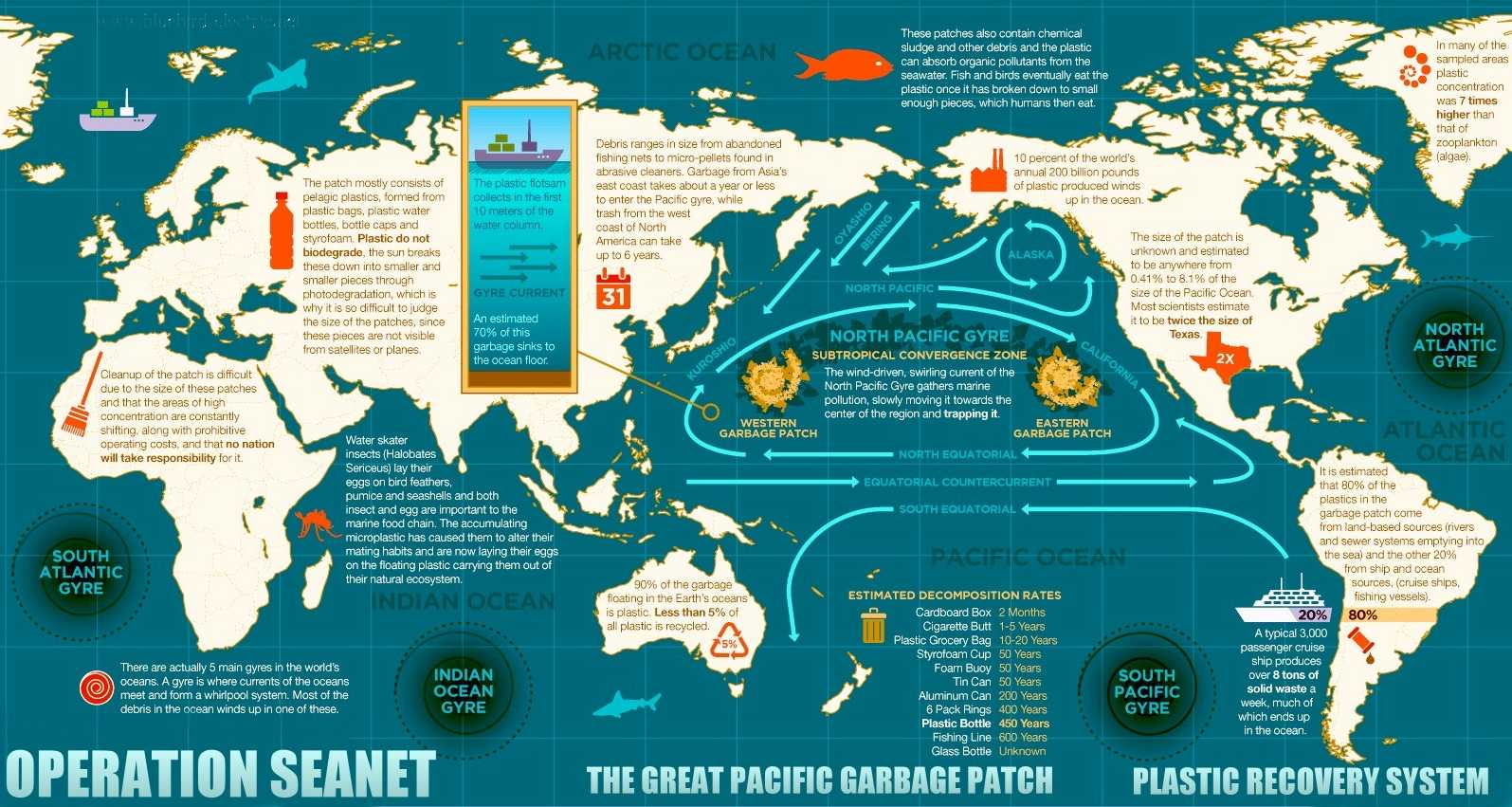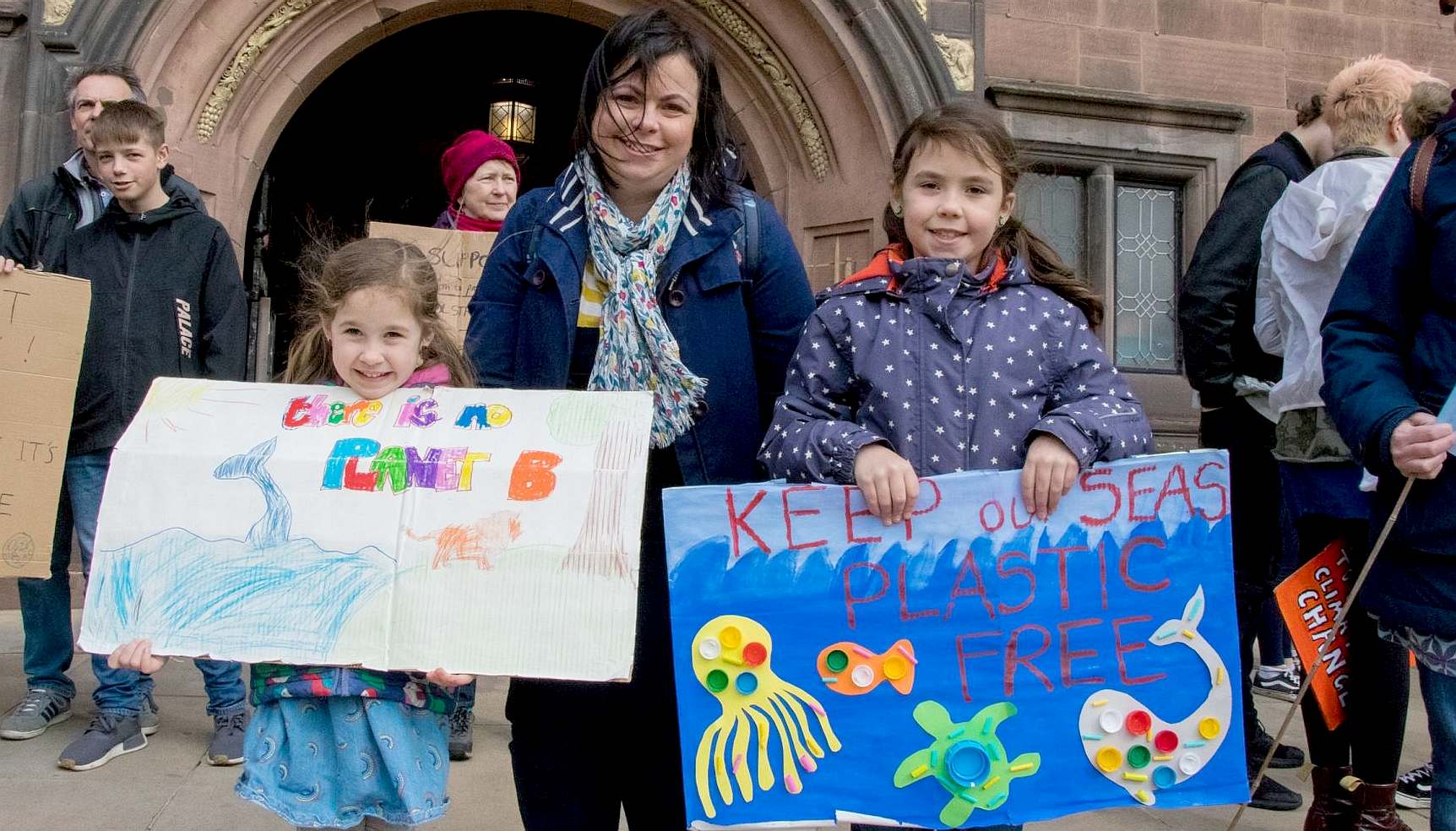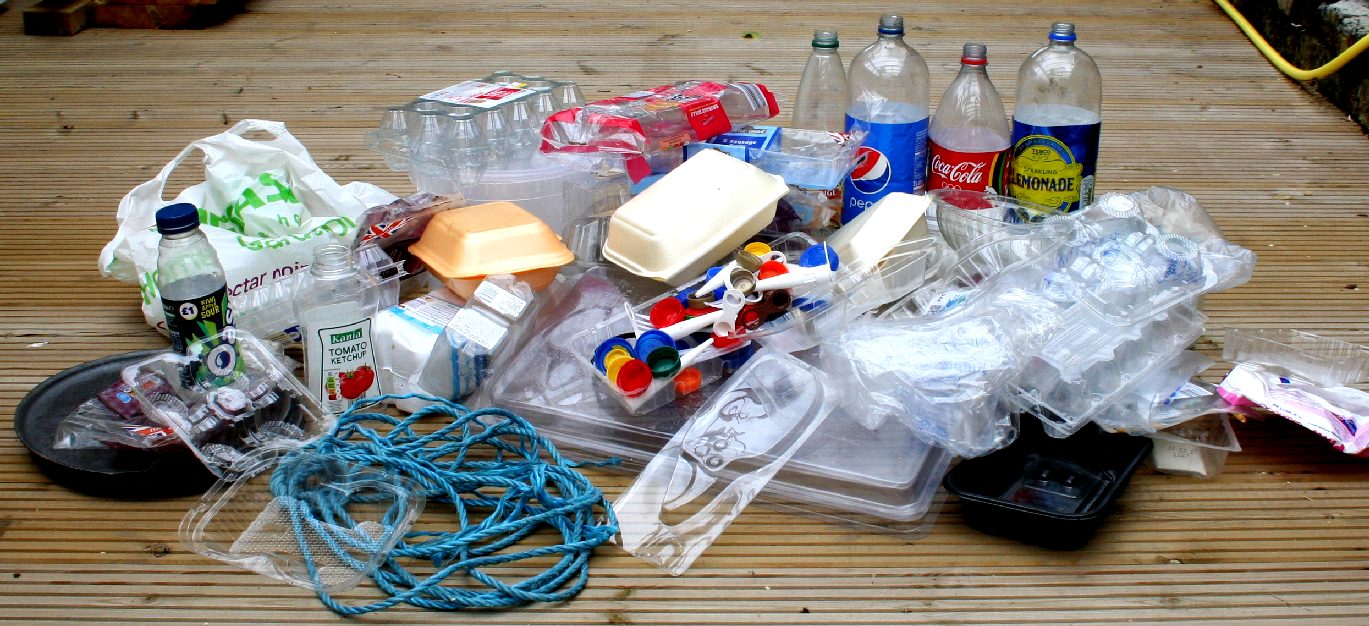|

BUILD
UP
- Plastic has accumulated in five ocean hot spots called
gyres, seen here in this world map derived from information
published by 5 Gyres.
The movement of the world’s major ocean gyres helps drive the “ocean conveyor belt.” The ocean conveyor belt circulates ocean water around the entire planet. Also known as thermohaline circulation, the ocean conveyor belt is essential for regulating temperature, salinity and nutrient flow throughout the ocean.
There
are 5 swirling ocean garbage patches called
gyres,
with a 6th rapidly forming in the Arctic ocean. The largest
gyre is the Great Pacific Garbage Patch, located between Hawaii and
California, held to be about the size of France at the moment but is
increasing. HOW
BIG IS THE GREATH PACIFIC GARBAGE PATCH (GPGP) ? HOW
DOES PLASTIC END UP IN OUR OCEANS ? WHAT
TYPES & HOW MUCH PLASTIC IS IN THE GPGP ? 1.
North Atlantic Gyre 2.
South Atlantic Gyre 3.
Indian Ocean Gyre 4.
North Pacific Gyre 5.
South Pacific Gyre 6.
Arctic
Ocean Gyre Types of Gyres
There are three major types of ocean gyres: tropical, subtropical, and subpolar.
Subpolar gyres form in the polar regions of the planet. They sit beneath an area of low atmospheric pressure. Wind drives the currents in subpolar gyres away from coastal areas. These surface currents are replaced by cold, nutrient-rich water in a process called upwelling. The Northern Hemisphere has several subpolar gyres, bounded by islands such as Iceland, Greenland, and the Aleutians; and the northern reaches of Scandinavia, Asia, and North America.
Tropical gyres form near the Equator. The Coriolis effect is not present at the Equator, and winds are the primary creators of currents. For this reason, tropical gyres tend to flow in a more east-west (instead of circular) pattern. The Indian Ocean Gyre is actually two distinct tropical gyres—the northern and southern Indian Ocean Gyres.
Most of the world’s major gyres are subtropical gyres. These form between the polar and equatorial regions of Earth. Subtropical gyres circle areas beneath regions of high atmospheric pressure. These are placid ocean areas thousands of kilometers in diameter. Unlike coastal zones, these central regions are relatively stable. The ocean water generally stays in one place while the currents of the gyre circulate around it. 
Movement of Gyres
Gyres are comprised of ocean currents that link up as they follow the coastlines of the Earth’s continents. Each gyre has a powerful western boundary current and a weaker eastern boundary current.
The North Atlantic Gyre begins with the northward flow of the Gulf Stream along the East Coast of the United States. The Gulf Stream is the western boundary current of the gyre. The gyre then becomes the North Atlantic Current, which flows across the North Atlantic to Europe. Still flowing in a circular pattern, the current flows south as far as the northwestern coast of Africa, where it is known as the Canary Current—the gyre’s eastern boundary current. The gyre is completed as the North Atlantic Equatorial Current crosses the Atlantic Ocean to the Caribbean Sea. This entire circle and the water within it is the North Atlantic Gyre.
Most ocean gyres are very stable and predictable. The North Atlantic Ocean Gyre always flows in a steady, clockwise path around the North Atlantic Ocean. Some gyres experience seasonal variation, however.
The Indian Ocean Gyre is a complex system of many currents extending from the eastern coast of Africa to the western coast of Australia. The northern part of the system circulates between the Horn of Africa and the Indonesian archipelago. It is sometimes called the Indian monsoon current.
The Indian monsoon current takes its name from the wind - the monsoon - that drives it. It is one of the very few currents in an ocean gyre that change direction. In the summer, the current flows clockwise, as the monsoon blows in from the southwestern Indian Ocean. In the winter, the current flows counterclockwise, as the wind blows in from the Tibetan plateau in the northeast.
The temperature in an ocean gyre depends on many factors, including the current. The Gulf Stream and summer monsoon current are warm currents. They are heated by the warm tropical waters of the Caribbean Sea (Gulf Stream) and equatorial Indian Ocean (summer monsoon current). The North Atlantic Current and winter monsoon current are cool currents. They are cooled by Arctic winds and ocean currents (North Atlantic) and the winter monsoon blowing from the icy Himalayas (winter monsoon current).
Garbage Patches
Ocean gyres circle large areas of stationary, calm water. Debris drifts into these areas and, due to the region’s lack of movement, can accumulate for years. These regions are called garbage patches. The Indian Ocean, North Atlantic Ocean, and North Pacific Ocean all have significant garbage patches. The garbage patch in the North Pacific Ocean is sometimes called the Pacific trash vortex or the Great Pacific Garbage Patch.
Garbage patches are created slowly. Marine debris makes its way into the Great Pacific Garbage Patch, for instance, from currents flowing along the west coast of North America and the east coast of Asia. Some of the debris is also dumped from ocean vessels.
The circular motion of the gyre draws in the debris, mostly small particles of plastic. Eventually, the debris makes its way to the center of the gyre, where it becomes trapped and breaks down into a kind of plastic soup.
Oceanographers and ecologists are concerned about garbage patches. In particular, they are studying the degradation, or breaking down, of plastics. Unlike natural substances, such as wood or metal, plastic does not disintegrate into organic substances. It simply breaks down into smaller and smaller pieces of plastic. These tiny plastic particles are as small as the algae and plankton that form the basis of the entire ocean food web. Species such as shrimp, birds, and fish consume these micro-plastics, which oftentimes kill them. The plastic chemicals can also be absorbed by predators of these species. The concentration of these chemicals increases through each trophic level of the food chain, a process known as biomagnification.
Garbage patches generally accumulate far from any country’s coastline, and it is nearly impossible to track the origin of marine debris. The tiny plastic particles that make up most of the patches are also very difficult and expensive to detect and remove. Few nations have accepted the responsibility of cleaning up the ocean’s garbage patches.

PROTESTS
- One way of drawing attention
to a social problem like marine litter is to peacefully demonstrate with
signs like this that say it all. By keeping the subject live in the minds of
politicians, eventually they will be forced into acting responsibly.
Life in a Gyre
Scientists are only beginning to understand the biodiversity of ocean gyres. Their calm centers have traditionally been regarded as oligotrophic, or nutrient-poor, because they have few concentrations of the organic chemicals that support producers, such as algae and plankton, in the ocean food web.
Researchers have recently discovered an expansion of oligotrophic regions in ocean gyres. They have correlated this expansion with increases in sea-surface temperatures—warm waters generally have far fewer nutrients than cold water.
The University of Hawaii is taking advantage of its position in the North Pacific Gyre to further study the gyre and factors that impact it. Scientists regularly study “the thermohaline structure, water column chemistry, currents, optical properties, primary production, plankton community structure, and rates of particle export” in this ocean gyre. If left
untreated, the plastic in these gyres will impact our ecosystems, health and economies.
This is a major problem now recognized by Governments. Solving the crises
demands a combination of tackling the source and cleaning up what has already accumulated in the
ocean.
How a Gyre Forms
Three forces cause the circulation of a gyre: global wind patterns, Earth’s rotation, and Earth’s landmasses. Wind drags on the ocean surface, causing water to move in the direction the wind is blowing.
The Earth’s rotation deflects, or changes the direction of, these wind-driven currents. This deflection is a part of the Coriolis effect. The Coriolis effect shifts surface currents by angles of about 45 degrees. In the Northern Hemisphere, ocean currents are deflected to the right, in a clockwise motion. In the Southern Hemisphere, ocean currents are pushed to the left, in a counterclockwise motion.
Beneath surface currents of the gyre, the Coriolis effect results in what is called an Ekman spiral. While surface currents are deflected by about 45 degrees, each deeper layer in the water column is deflected slightly less. This results in a spiral pattern descending about 100 meters (330 feet).
Earth’s continents and other landmasses (such as islands) also influence the creation of ocean gyres. The massive South Pacific Gyre, for instance, includes hundreds of kilometers of open ocean. It is bounded only by the continents of Australia and South America, as well as the Equator and powerful Antarctic Circumpolar Current (ACC).
In contrast, the northern Indian Ocean Gyre is a much smaller ocean gyre. Unlike the South Pacific Gyre, its extent is determined largely by landmasses. The Equator forms its southern boundary, but it is bounded elsewhere by the Horn of Africa, Sri Lanka and the Indian subcontinent, and the Indonesian archipelago. 
FAST
FOOD
- It's not just fast food, it
is our exploitative society that is poisoning the planet, without thought
for the consequences. We've been living at artificially low prices at the
expense of killing other life on earth.
|



